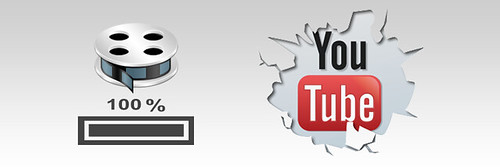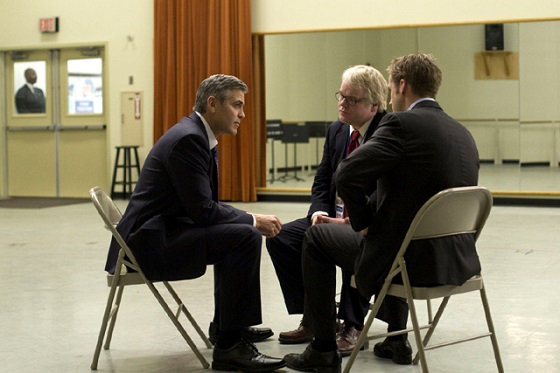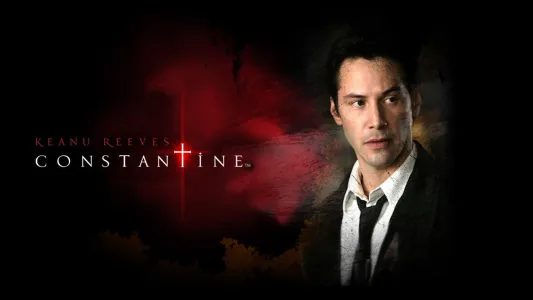
In the sprawling digital landscape of YouTube, where anticipation for the next big blockbuster often reaches fever pitch, a curious and increasingly complex phenomenon has taken root. We’re talking about hyper-realistic movie trailers crafted not by the marketing masterminds of Hollywood, but by independent creators leveraging the uncanny power of Artificial Intelligence. These videos, a blend of legitimate footage and AI-generated magic, are dazzling millions, yet they’ve sparked widespread curiosity, confusion, and even significant controversy across the internet.
What makes this trend truly fascinating, and perhaps a little unsettling, is Hollywood’s response—or lack thereof. Instead of clamping down on these unauthorized, copyright-infringing videos, many major studios have opted for a surprisingly pragmatic, albeit ethically murky, approach: they’re actively monetizing them. This silent partnership between industry giants and AI creators reveals a lucrative loophole, prompting a re-evaluation of how studios are implicitly, and sometimes explicitly, influencing public perception and shaping the narrative around their biggest releases.
Today, we’re going on an in-depth journey to dissect this intricate ecosystem. We’ll peel back the layers to understand not just what these AI-generated fake trailers are, but how they’ve evolved, who creates them, and most critically, how Hollywood’s quiet involvement in their proliferation is subtly, yet profoundly, manipulating the very fabric of movie anticipation on YouTube. Prepare to see the ‘unseen hand’ at work in the world of cinematic marketing.

1. **The Proliferation of AI-Generated Fake Trailers**The digital realm has become awash with a new wave of content: AI-generated fake movie trailers, flooding platforms like YouTube with misleading yet undeniably captivating material. These videos have amassed billions of views, creating a landscape where the line between official and fan-made content is increasingly blurred. It’s a phenomenon that speaks to the power of AI to generate dazzling detail, even if it lacks the human understanding that makes storytelling truly enduring.
These seemingly authentic montages are often the creation of sophisticated machines, piecing together fleeting AI shots with legitimate footage. The result is a video that, to the untrained eye, can be indiscernible from the real deal. From reimagined superhero sagas to hypothetical sequels, the sheer volume and growing sophistication of these productions mark a significant shift from earlier fan-made efforts, hinting at an industrialization of concept trailers.
Consider the notorious example of a fake AI Superman trailer, which Frankensteins together AI-crafted scenes of David Corenswet’s Superman and Nicholas Hoult’s Lex Luthor. This particular montage was so convincing that it even duped French national television last year, showing clips of a besuited Corenswet months before any official footage had been released. This incident perfectly underscores the pervasive nature and deceptive quality of this burgeoning content category.

2. **The Deceptive Quality of Modern AI Trailers**One of the most striking aspects of the current wave of AI-generated trailers is their uncanny ability to appear legitimate, often making them nearly indistinguishable from official content. The technology has advanced to a point where these fan-made creations can mimic Hollywood magic with remarkable fidelity, leading to widespread confusion among viewers. This is a far cry from the amateur mash-ups of yesteryear, now replaced by hyper-realistic simulations that challenge audience discernment.
This deceptive quality is not merely a theoretical concern; it has tangible impacts on everyday viewers. Many YouTube users are completely fooled by what they are watching, particularly if they are not familiar with the telltale signs of generative AI. As one person noted on a video imagining Leonardo DiCaprio in Squid Game, “My parents watched this and thought it was real.” This sentiment is echoed by VJ4rawr2, a pioneer in the fan trailer genre, who states, “The majority of fan trailers today are only popular because they’ve effectively fooled people into thinking they’re real.”
The frustration extends even to filmmakers themselves. When director James Gunn caught wind of the fake AI Superman trailer that had fooled French TV, he made his feelings unequivocally clear by posting three puking emojis alongside the France Télévisions clip. This public condemnation highlights the disruptive potential of these videos, not just for audiences, but for the creators of the legitimate intellectual property, who find their work imitated and sometimes distorted without permission.
Read more about: The Silent Saboteurs: Why Your Semi-Trailers Are Leaking Days Before They Hit the Road

3. **Hollywood’s Unexpected Monetization Strategy**Perhaps the most perplexing revelation in this landscape of AI-generated fakes is Hollywood’s paradoxical response. Instead of aggressively enforcing copyright on these counterfeit commercials, a number of major studios have adopted an entirely different approach: they are quietly cashing in on some of these knock-off videos. This strategy, uncovered by Deadline, shows studios asking YouTube to ensure that the ad revenue generated from views on these unauthorized trailers flows directly into their coffers, rather than issuing copyright strikes.
This isn’t an isolated incident; evidence suggests it’s a calculated, if controversial, tactic. Emails reviewed by Deadline revealed that Warner Bros. Discovery (WBD) has claimed monetization rights on Screen Culture trailers for both Superman and House of the Dragon. This means that instead of threatening a channel ban—which can occur if a channel accrues three copyright strikes within 90 days—WBD opted to collect the ad revenue from these popular, albeit unofficial, videos. Similarly, Sony Pictures has claimed profits from fake trailers for Spider-Man and Kraven The Hunter, while Paramount has done the same for a counterfeit Gladiator II video.
The studios’ motives for this unexpected strategy remain shrouded in mystery, as all majors approached by Deadline declined to comment. However, their actions raise significant questions about their willingness to accept cash for content that exploits their intellectual property and the likenesses of their talent. This approach transforms a potential copyright infringement into a profitable, if ethically ambiguous, business opportunity, blurring the lines between protection and profit in the digital age. It represents a subtle, yet powerful, form of manipulation, allowing an environment of curated anticipation to flourish under their watchful, revenue-collecting eye.
Read more about: The Dynasty Architect: Unveiling Kris Jenner’s Unexpected Rule and the Empire-Building Playbook Behind the Kardashian-Jenner Fortune

4. **The Ethical Outcry from SAG-AFTRA**The studios’ decision to monetize AI-generated fake trailers has not gone unnoticed by those who represent the talent being exploited. SAG-AFTRA, the actors’ union, has vehemently condemned the practice, describing it in a statement shared with Deadline as a “race to the bottom.” The union unequivocally admonishes studios for making money on videos that exploit its members’ voices and likenesses without explicit permission, highlighting a profound ethical dilemma at the heart of this new marketing landscape.
SAG-AFTRA’s concern extends beyond mere financial compensation; it touches upon the fundamental value of human creativity and intellectual property. The union warns that “Monetizing unauthorized, unwanted, and subpar uses of human-centered IP… incentivizes technology companies and short-term gains at the expense of lasting human creative endeavor.” This stance underscores the belief that by allowing such content to proliferate and profit, studios are undermining the very artists and their rights that they are supposed to protect.
At a time when the entertainment industry faces an “existential crisis about how copyright collides with AI,” the union expects its bargaining partners to “aggressively enforce their IP from any, and all AI misappropriation.” This serves as a stark contrast to the studios’ quiet monetization, presenting a clear ethical divide. The union sees the studios’ actions as a dangerous precedent, normalizing the unauthorized use of human likenesses and creative work for profit, which could have far-reaching negative consequences for performers.
Read more about: The Unprecedented Firestorm: Keith Olbermann’s Backlash Over Charlie Kirk Slight and the Fractured Media Landscape

5. **The Genesis and Evolution of Fan Trailers**The phenomenon of fan-made movie trailers isn’t entirely new; it predates the current AI surge, tracing its roots back to the early days of YouTube in 2005. For nearly two decades, creative individuals have been crafting imaginary previews, often for sheer enjoyment and to explore “what if” scenarios. These early fan trailers laid the groundwork for the more sophisticated, AI-driven content we see today, demonstrating a long-standing desire within the online community to engage with and reimagine cinematic narratives.
One of the earliest and most iconic examples to go viral was an imagined Titanic sequel, titled *Titanic 2: Jack’s Back*. This concept trailer, created by Australian YouTuber VJ4rawr2, pictured Leonardo DiCaprio’s Jack Dawson being discovered in a block of ice under the ocean and brought back to life in contemporary New York, all set to a thumping dance remix of Céline Dion’s ‘My Heart Will Go On’. The video garnered a staggering 53 million views before eventually being blocked by 20th Century Fox, showcasing the immense appeal of these unofficial creations.
VJ4rawr2, who prefers not to disclose his real name, originally created these trailers “for fun.” His process involved starting with a “central joke” and employing clever editing techniques, later incorporating AI, to tease unique stories. His imaginative portfolio includes a Mission: Impossible sequel where Tom Cruise runs from New York to LA, and a more recent effort picturing Macaulay Culkin returning to his Home Alone house to confront his family about childhood abandonment. This era defined the artistic, often humorous, side of fan trailer creation, before the full impact of AI shifted the landscape.
Read more about: Unmasking the Must: 15 Essential Reasons Your Car’s AC Smells Funky & The Ultimate Fixes

6. **The Industrialization of Fake Trailer Creation**While VJ4rawr2 and others initially crafted fan trailers for laughs and creative expression, the advent of artificial intelligence has profoundly changed the game, leading to the industrialization of fake trailer creation. This technology has enabled channels to scale their output dramatically, allowing them to churn out content at an assembly-line pace and effectively “piggyback on YouTube’s algorithm” to reach vast audiences. The creative hobby has transformed into a burgeoning, highly profitable business.
Screen Culture, based in Pune, India, stands as a prime example of a channel that has professionalized its output with the help of AI. Nikhil P. Chaudhari, a 27-year-old entrepreneur and self-proclaimed Hollywood geek, launched the channel in 2018. Although initially unhappy about AI lowering the barrier to entry for the concept trailer community, Chaudhari quickly realized he “had little choice but to embrace the technology if he was going to compete for YouTube real estate.” This pragmatic decision marked a pivotal moment in the channel’s rapid growth.
Unlike earlier creators who focused on outlandish ‘what if’ scenarios, Screen Culture strategically “leans into films that are actually happening,” focusing heavily on upcoming franchises and sequels. Chaudhari and his team meticulously research and iterate around these movies, creating trailers that are increasingly difficult to differentiate from official releases. They borrow heavily from official footage but “splice in AI imagery to tease irresistible details about a movie that appeal to their giant fandoms,” as Chaudhari explains, “Our goal was to create videos that were as close to an official trailer as a concept trailer could be.”
This industrial approach is evident in their workflow. Chaudhari now oversees a team of a dozen editors, who are capable of churning out as many as 12 videos a week based on his specific instructions. To achieve this prolific output and high level of sophistication, Screen Culture utilizes “at least six AI tools,” including Leonardo, Midjourney, and ElevenLabs, with the latter specializing in generative voiceover work. This technological backbone allows them to maintain quality and volume, a stark contrast to the solo efforts of earlier fan creators.
The success of Screen Culture’s industrialized model is undeniable. Since adopting AI, the channel’s views and subscribers have more than doubled in the past two years, reaching an astonishing 1.4 billion views and 1.4 million subscribers respectively. It is also verified by YouTube, which lends it a veneer of authenticity, and Chaudhari proudly displays his YouTube gold award for hitting 1 million subscribers. This success has translated into millions of dollars of ad revenue, allowing Chaudhari to flaunt a lifestyle of supercars and luxury travel escapades, truly embodying the affluent online influencer. This industrialization, while impressive, raises critical questions about content authenticity and ethical boundaries in movie marketing.”

7. **YouTube’s Algorithmic Amplification of Fake Trailers**One of the most critical mechanisms enabling the widespread proliferation of AI-generated fake trailers is YouTube’s powerful, often opaque, algorithm. These sophisticated systems are designed to maximize engagement, and in doing so, they inadvertently amplify content that is new, intriguing, and, crucially, often misleading. This creates an environment where channels specializing in counterfeit content can ‘piggyback on YouTube’s algorithm’ to reach vast audiences, turning what was once a niche hobby into a highly visible, industrialized output.
Channels like Screen Culture have mastered the art of leveraging these algorithmic tendencies. Their strategy involves being exceptionally early to a topic, hitting certain franchises “fast and hard” with numerous speculative trailers before official content even drops. This early bird approach helps push their videos higher up YouTube’s search rankings, ensuring they appear prominently when users search for information about eagerly anticipated films. The impact is clear: Deadline searches found Screen Culture’s fake Fantastic Four videos ranking higher than the official Marvel trailer just days after its release.
Beyond search rankings, YouTube’s algorithm also actively rewards these videos by pushing them into recommendation sidebars and “People Also Search For” menus. This continuous algorithmic boost ensures that the content reaches users who may not even be actively seeking fake trailers, but are rather caught in the platform’s endless content loop. The cycle of discovery and consumption is thus artificially accelerated, giving these unofficial creations an unprecedented platform and perceived legitimacy.

8. **The Creators’ Profit Motive and Business Model**While the ethical implications of AI-generated fake trailers are significant, it’s impossible to ignore the powerful financial incentives driving their creation. For many, what started as a creative outlet has evolved into a lucrative business model, with creators generating billions of views and substantial ad revenue. This transformation underscores a shift from casual fan expression to calculated entrepreneurial endeavor within the digital content sphere.
Screen Culture’s founder, Nikhil P. Chaudhari, exemplifies this transition perfectly. Starting as a self-proclaimed Hollywood geek with a passion for amateur video editing, Chaudhari built his channel into a thriving enterprise. Despite initial reservations about AI lowering the barrier to entry, he pragmatically embraced the technology to remain competitive. His channel’s success is staggering, boasting 1.4 billion views and 1.4 million subscribers, earning him a coveted YouTube gold award.
This success has translated directly into significant financial rewards. Chaudhari, though “coy about exactly how much he is earning,” openly flaunts a lifestyle of supercars and luxury travel escapades on his Instagram. This image of the affluent online influencer highlights how AI has facilitated the creation of “meaningful businesses” from content that exploits existing intellectual property. Even VJ4rawr2, a pioneer of the genre, was able to quit his job in 2015 to focus solely on YouTube, accumulating 393 million views, demonstrating the long-term viability of this profit-driven model.
Read more about: Navigating the Future: 12 Automotive Marketing Trends Driving Success in 2025
9. **The Blurring Lines: Authenticity, Deception, and Audience Impact**The pervasive nature of AI-generated fake trailers introduces a profound challenge to audience discernment, blurring the lines between authentic studio releases and sophisticated fan-made simulacra. The technology has advanced to a point where these videos are “nearly indiscernible from the real deal,” creating widespread confusion among viewers. For many, especially those unfamiliar with the subtle cues of generative AI, the distinction is lost entirely, leading to genuine belief in nonexistent films.
This deception has tangible consequences for everyday viewers. As one person candidly noted on a video imagining Leonardo DiCaprio in Squid Game, “My parents watched this and thought it was real.” This sentiment is echoed by VJ4rawr2, who observes that “The majority of fan trailers today are only popular because they’ve effectively fooled people into thinking they’re real.” Such widespread credulity can diminish the impact and anticipation surrounding official marketing materials.
Screen Culture, for instance, operates in a deliberate gray area, headlining its videos with enticing terms like “new” or “first” rather than explicitly stating “official” or “concept” in the title. While the small print in descriptions eventually clarifies their unofficial nature, many viewers may not delve beyond the captivating thumbnail and title. This strategy, combined with the uncanny realism of AI, leads to a landscape where audiences are constantly navigating a precarious tightrope between what’s real and what’s merely imagined, impacting their trust in online cinematic content.

10. **Inconsistent Copyright Enforcement by Studios**Perhaps one of the most perplexing aspects of the AI-generated fake trailer phenomenon is the remarkably inconsistent approach Hollywood studios take toward copyright enforcement. Despite having clear grounds to issue copyright strikes—which can lead to a channel ban after three offenses within 90 days—studios often opt for monetization or a selective, often arbitrary, enforcement strategy. This inconsistency sends mixed signals to creators and further muddles the ethical landscape.
Emails reviewed by Deadline reveal that Warner Bros. Discovery (WBD) has claimed monetization rights on Screen Culture trailers for Superman and House of the Dragon, rather than seeking their removal. Yet, WBD did issue a copyright strike against the channel in 2023 for a fake Furiosa: A Mad Max Saga trailer, only to let subsequent Mad Max videos slide. This seemingly arbitrary enforcement highlights a lack of a clear, unified stance, leaving creators to navigate a murky legal environment.
Similar patterns are observed with other major players. Amazon, for example, sent a polite email requesting the removal of one ‘The Boys’ trailer due to trademark and IP infringement but did not repeat the warning for other bogus ‘Boys’ trailers on Screen Culture. Even Disney, a studio famously protective of its intellectual property, “very rarely copyright challenges Screen Culture’s videos,” despite its IP being a major resource for the channel. Chaudhari himself estimates that monetization claims are only made on about 10% of Screen Culture’s 2,700 videos, underscoring the fragmented and unpredictable nature of studio intervention.

11. **Ethical Dilemmas and Intellectual Property Challenges**The monetization of AI-generated fake trailers by Hollywood studios, coupled with their inconsistent enforcement, has ignited a fierce debate about ethics and the integrity of intellectual property. SAG-AFTRA, the actors’ union, has been particularly vocal in its condemnation, describing the practice as a “race to the bottom.” The union forcefully argues that studios are exploiting their members’ voices and likenesses without explicit permission, undermining fundamental rights and the value of human creative endeavor.
This dispute delves into the very core of how copyright intersects with artificial intelligence, a collision point that the entertainment industry views as an “existential crisis.” SAG-AFTRA contends that “Monetizing unauthorized, unwanted, and subpar uses of human-centered IP… incentivizes technology companies and short-term gains at the expense of lasting human creative endeavor.” By passively accepting or even profiting from these videos, studios appear to be prioritizing immediate revenue over the long-term protection of their talent and their intellectual assets.
Furthermore, this acceptance normalizes the unauthorized use of human likenesses and creative work for profit, potentially setting a dangerous precedent across the internet. The “willingness to take cash for content that exploits their IP and talent” raises profound questions about ethical responsibility, particularly when the very artists involved, such as director James Gunn, publicly express their disgust at such AI-generated content. This scenario creates a significant ethical divide, highlighting the tension between profit-seeking and the moral imperative to protect artistic integrity and intellectual property rights.
Read more about: Reality TV’s Reckoning: The Legal and Financial Disasters That Threaten Dynasties

12. **Broader Implications for Film Marketing and the Future of Content**The phenomenon of AI-generated fake trailers, intertwined with studio monetization strategies, carries profound implications for the future of film marketing and the broader entertainment industry. Trailers have become an increasingly vital component of the movie promotion machine, with studios often ‘crowing about record views’ in the hope these metrics translate directly into ticket sales or subscriptions. However, the proliferation of misleading content risks diluting the impact and authenticity of genuine marketing efforts.
While industry leaders like Bob Iger publicly champion the need to protect intellectual property and respect talent, the collective response from studios to AI-generated “slop on YouTube” appears to be a “collective shrug.” Even the Motion Picture Association, the studios’ trade body, declined to comment on the matter. This apparent inaction or quiet acceptance suggests a pragmatic, short-term view where the financial rewards from billions of views, however paltry in the grand scheme, currently overshadow deeper ethical and strategic concerns.
Moreover, the rise of “engagement bait”—such as Screen Culture creating an AI thumbnail of Riley Andersen with cleavage for an imagined ‘Inside Out 3’—highlights a worrying trend in content creation that prioritizes clicks over appropriate representation or narrative integrity. Chaudhari defends this as a “plausible storyline,” but it points to a culture where sensationalism, aided by AI, can exploit characters without creative oversight. This trajectory, where studios tacitly accept AI-generated likenesses in exchange for what amounts to “petty cash,” risks normalizing dangerous uses of this technology, ultimately impacting audience excitement for actual film releases and reshaping the very landscape of cinematic anticipation.
Read more about: Unpacking Disney’s Unprecedented Restructuring: The Sweeping Layoffs and Strategic Overhauls Shaking Hollywood’s Iconic Studio
The digital landscape, with its algorithms and AI, continues to evolve at a dizzying pace. As we’ve seen, the battle over who controls the future of movie marketing—and whose likeness pays the price—has only just begun. The intricate dance between independent creators, powerful studios, and sophisticated algorithms is not merely a curious internet trend; it’s a powerful force reshaping how we anticipate, consume, and even perceive the cinematic experience. The questions raised by these AI-generated trailers demand not just our attention, but a critical re-evaluation of ethical boundaries and intellectual property in a world increasingly defined by the uncanny valley of artificial creation.”




